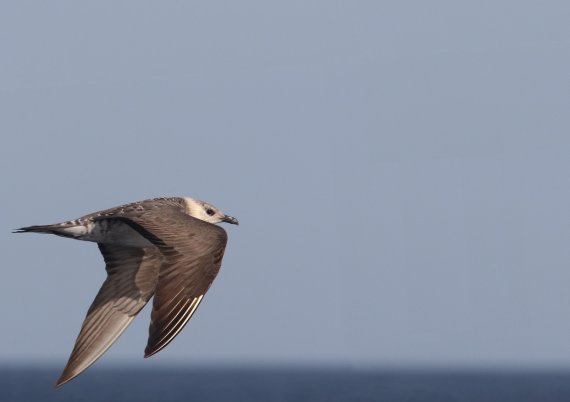Van Bemmelen loves skuas, especially the long-tailed skua, which he has been studying ever since he first encountered it, in 2007 in Swedish Lapland. He got his PhD last week for a study on this bird’s migration patterns, its relative the Arctic skua and two species of phalarope, the red and the red-necked.
Van Bemmelen used geolocators, small data loggers that are attached to the birds’ feet or back and that measure light every five minutes. That data reveals longitude and latitude, so the position of the bird can be determined. That is, if you can catch the birds again, since the data is not transmitted. The birds are caught when they are sitting on their nests.
Van Bemmelen and teams from 10 countries collected flight data from 224 birds in this way. That is more than in most migrating bird studies, and enough to fill out or adjust the existing picture of the overwintering areas of the four birds. Take the long-tailed skua, for instance: ‘It was said to overwinter around Antarctica, but we didn’t find any evidence of that.’
From the migration data collected, it turns out that the long-tailed skua mainly spends the winter in the Benguela current off the west coast of southern Africa. And the overwintering area of the Arctic skua is surprisingly large, covering large parts of the Atlantic Ocean, the northwest of the Indian Ocean and the Mediterranean Sea.
Another striking feature of the migration pattern is its inconsistency. ‘Why, for example, do all the red-necked phalaropes from one population migrate to the same overwintering area, but red phalaropes from one population migrate to areas along the entire length of the Atlantic Ocean?’ Migration routes can even vary a lot within a single species. Red-necked phalaropes from Russia fly to the Arabian Sea, but those from Scotland to the eastern Pacific.
Birds don’t visit the same overwintering areas every year, either. Red phalaropes that brood in Northeast Greenland and Spitsbergen overwintering at three different places on the Atlantic Ocean, but not at the same place every time. Why they do this, and what determines their choice, is not clear. There is still so much to find out, sighs Van Bummelen.
His migration data shed new light on old questions. They also provide support for Birdlife International’s proposal to designate a protected nature area in the north of the Atlantic Ocean. Millions of birds rest in this area during their migration between north and south. ‘That proposal is based on migration data on the long-tailed skua from my study, and on 23 other birds.’

 Long-tailed jaeger off the coast of Mauritania. Photo: Rob van Bemmelen
Long-tailed jaeger off the coast of Mauritania. Photo: Rob van Bemmelen